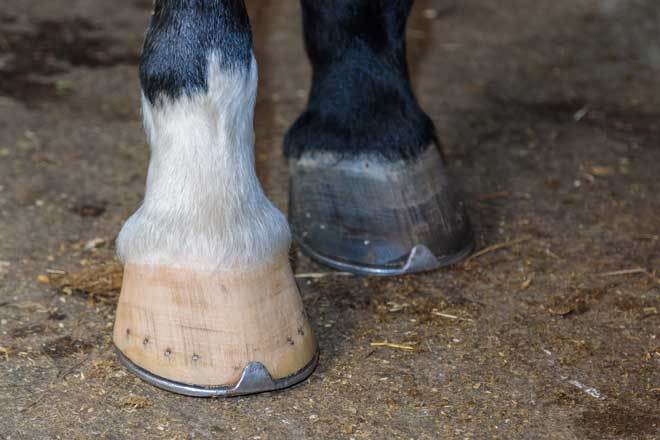
Horses have been a part of human society for centuries, fulfilling important roles in transportation, agriculture, and leisure activities. Their hooves, made of keratin, are a unique feature of horses and essential for their survival and well-being. In this article, we will delve into the fascinating world of horse hooves and understand why they are so important.
Hooves are the hard outer coverings of a horse's feet, which can be divided into two parts: the wall and the sole. The visible and hard outer part of the hoof is called the wall. The sole, which is located inside the wall, is softer. Together, the wall and the sole form a protective barrier that hinders the horse's foot from external injuries and infections.
But why do horses have hooves? The answer lies in their evolution. Horses evolved as running animals, their hooves evolved as a specialized adaptation to their environment. In the wild, horses roam over varied terrain, including rocky terrain, marshy areas, and rough terrain. The hooves help the horse maintain balance and traction on these surfaces, allowing it to run and escape predators. The hoof also acts as a shock absorber, reducing the impact of each stride on the horse's leg.
In addition to their functional benefits, horse hooves also serve as an important indicator of the animal's overall health. A healthy hoof is smooth, solid, and free from cracks or deformities. It is also slightly concave, which helps the horse retain balance and distribute weight evenly across the foot. A horse with healthy hooves is more likely to be sound, perform better, and have a longer lifespan than a horse with unhealthy hooves.
However, maintaining healthy hooves requires proper care and attention from horse owners. Regular hoof trimming and cleaning are essential to prevent the accumulation of dirt and debris, which can lead Horse Hoof to infections and other problems. Additionally, providing the horse with a balanced diet that includes essential nutrients such as biotin, zinc, and copper can promote healthy hoof growth and strength.
In conclusion, horse hooves are a vital part of the animal's anatomy, offering protection, balance, and traction on various surfaces. They have evolved as a specialized adaptation to the horse's environment, and their condition serves as an important indicator of the animal's overall health. Proper care and attention are necessary to maintain healthy hooves and ensure the well-being of the horse. As responsible horse owners, it is our responsibility to ensure that our horses receive the care they need to thrive.
Comments on “The Science Behind Horse Hooves and Their Functionality”